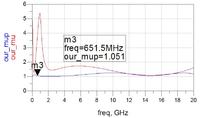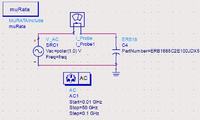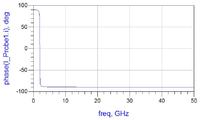pudding
Member level 2
Hi Guys,
I am designing an LNA at 2.4 GHz. I am a beginner. The transistor is NEC3210S1. When I use an ideal capacitor c7=200pF, the stability is OK(the second picture). But when I changed to a real capacitor model ATC700B201JP300 200pF, the stability became worse(the third picture). I tried several other company's model and got the same results. Another question is since my LNA works at 2.4 GHz, and the mu and mu_prime are less than 1 from 9 GHz, will my circuit becomes resonant? I attached my ads model and murata and NEC kits also. Thanks a lot!
Wufeng
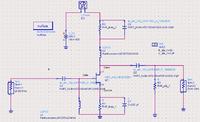
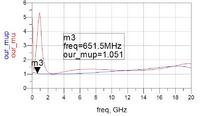
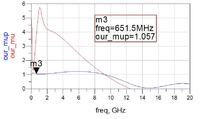
I am designing an LNA at 2.4 GHz. I am a beginner. The transistor is NEC3210S1. When I use an ideal capacitor c7=200pF, the stability is OK(the second picture). But when I changed to a real capacitor model ATC700B201JP300 200pF, the stability became worse(the third picture). I tried several other company's model and got the same results. Another question is since my LNA works at 2.4 GHz, and the mu and mu_prime are less than 1 from 9 GHz, will my circuit becomes resonant? I attached my ads model and murata and NEC kits also. Thanks a lot!
Wufeng



